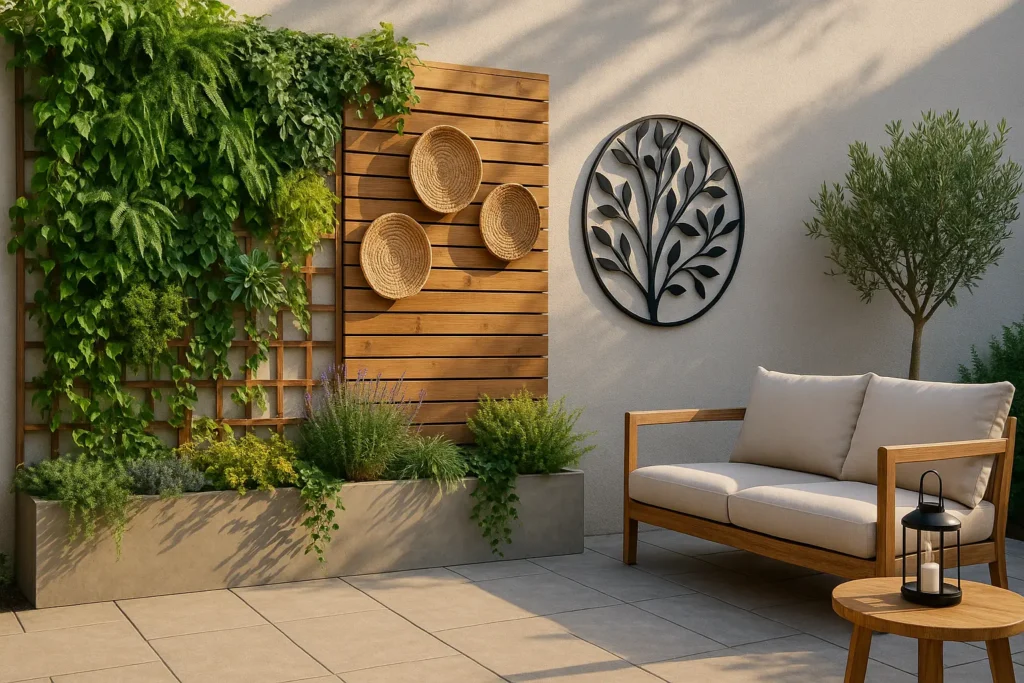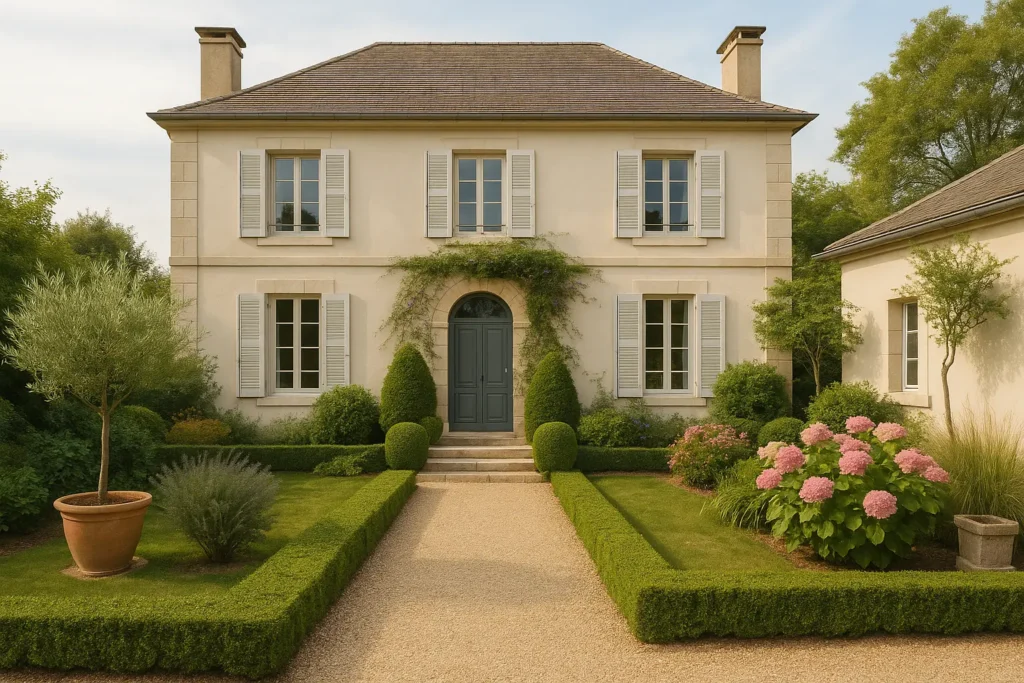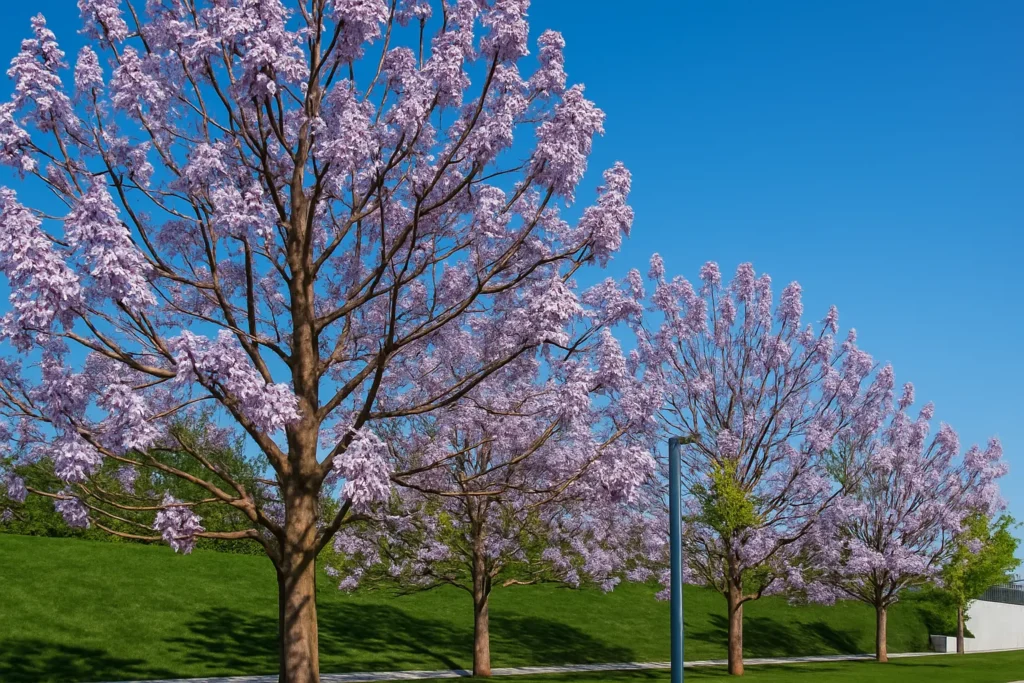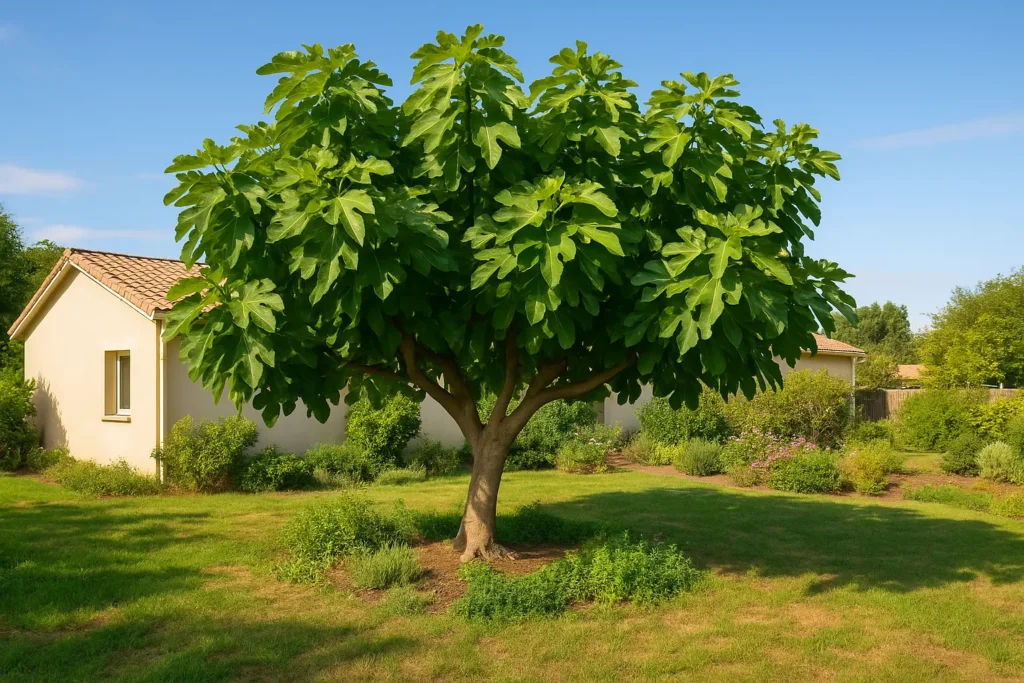THE cypress or cupressus sempervirens is a tree with a slender silhouette and evergreen foliage. It appeals to many gardeners and homeowners looking for privacy and greenery all year round. These Mediterranean conifers bring a touch of authenticity and a distinctive vertical structure to our gardens. However, despite their undeniable aesthetic qualities, the cCypress trees have significant drawbacks, so much so that planting a cypress near a house carries risks that are often underestimated. Between structural problems, maintenance constraints, disease, fire risks and impacts on the immediate environment, these majestic trees can transform your peaceful haven into a source of concern. Here are the Nine main disadvantages of cypress if you want to plant it near the house.
Our article in brief:
Mediterranean cypresses, despite their elegance and evergreen nature, have significant drawbacks if planted near houses.
- Theirs invaded rootsThey can threaten your foundations, pipes, and terraces. To avoid any problems, cypresses should be planted at least 5 meters apart.
- Their rapid growth (up to one meter per year) requires constant maintenance and reduces the usable space in the garden.
- The cypresses create a excessive shading reducing sunlight by up to 50% and darkening the interior of homes.
- THE Cypress pollen is highly allergenicThey cause rhinitis, conjunctivitis and asthma attacks for several months.
- They generate a persistent humidity promoting moss and mold on all surrounding surfaces.
- Cypress foliage is highly flammable, which is dangerous in areas with high fire activity.
- THE Cupressus is also a tree susceptible to insects and diseases. It therefore needs a lot of treatment.
Summary
Cypress roots are a danger to your home
Cypress tree roots are probably one of the most problematic drawbacks when these trees are planted near a House. Indeed, their superficial but extraordinarily extensive root system can reach two to three times the total height of the tree. This characteristic, inconspicuous but formidable, transforms these conifers into real dangers for your outdoor landscaping.
On clay soils, these roots of Cupressus dangerously accentuate the natural phenomenon of soil shrinkage and swelling. The consequences can be dramatic for the House :
- raised paving stones
- cracked terraces
- weakened foundations.
Underground pipes are not spared either. Roots infiltrate them in search of moisture, causing blockages that are costly to repair.
The golden rule is to maintain a minimum distance of five meters between a cypress tree and any structure. This precaution is particularly crucial with vigorous varieties such as the Leyland cypress, whose territorial appetite does not know property limits, potentially creating tensions with the neighborhood.
Uncontrollable growth that transforms your garden
The surprising speed of development of cypresses
The rapid growth of cypresses is both their initial attraction and their main drawback. Some varieties such as Leyland cypress or Italian cypress can grow up to one meter per year during their first years of development.What seemed like a young decorative tree can quickly turn into a giant invading your living space.
Without regular pruning, a column of cupressus sempervirens naturally gains 30 to 50 centimeters in width each year, gradually reducing the usable surface area of your gardenThe disadvantage of cypress in this context is that it requires frequent and rigorous interventions for any owner or gardener, transforming a landscaping choice into a real daily constraint.
| Age of the cypress | Typical problems and drawbacks | Necessary interventions |
|---|---|---|
| 1-5 years | Very rapid growth in height | Annual training size |
| 5-15 years old | Progressive widening, imposing height | 2-3 annual sizes |
| 15-20+ years old | Thinning at the base, bare branches | Complex, often inefficient sizes |
Furthermore, after 15 to 20 years, cypress trees generally become bare at their base, creating unsightly gaps that are impossible to fill. This natural degradation of the tree's shape cannot be corrected, even with the most meticulous maintenance, permanently compromising the initially desired blackout effect.
Excessive shade from cypress trees darkens your daily life
Another drawback of cypress trees is their excessive shade. The imposing height of cypress trees, which can reach 15 to 20 meters at maturity, gradually transforms your lighting environment. Their slender silhouette and dense foliage create areas of permanent shade that extend over the land and sometimes even into neighbors' homes., radically changing the ambiance of your outdoor space.

This persistent shadow considerably reduces natural sunlight. This reduction in light can even reach 30% to 50% in certain areas of the gardenThe consequences are therefore felt both outside and inside your home:
- Gradual decrease in brightness in rooms facing cypress trees, requiring increased artificial lighting
- Terraces and relaxation areas once bathed in sunshine transformed into cool, shaded areas
- Feeling of being closed in and losing visual connection with the outside world, especially in winter
This darkening inexorably increases over the years, as the trees gain height and density. What initially seemed like a soothing green setting can ultimately create an oppressive atmosphere, completely contradicting the bright and warm ambiance you're looking for in your living space.
Fierce competition with other plants in your garden
Cupressus sempervirens creates real competition for natural resources with other plants in your garden. garden. Their roots primarily capture available water and nutrients, creating a hostile environment for other plantations within a radius of 5 to 7 meters around each mature tree.
The phenomenon first manifests itself in the gradual decline of the lawn, leaving unsightly bare patches under the conifers. Flowerbeds struggle to thrive, while ornamental shrubs and vegetable crops show signs of suffering near these land-grabbing neighbors.

The gradual acidification of the soil, caused by the slow decomposition of needles, also alters the chemical composition of the soil. The impermeable litter that forms at the base of trees further complicates the situation by preventing rainwater from properly penetrating, creating an increasingly unfavorable environment for the plant biodiversity in your garden.
Cypress pollen allergies: a health hazard to consider
One of the most problematic drawbacks of cypress trees is their pollen, which is one of the most potent allergens in the plant world. The pollination period, which generally runs from January to April, transforms these decorative conifers into veritable allergen factories., likely to affect your quality of life and that of those around you.

Allergy symptoms associated with cypress pollen can be particularly debilitating:
- Severe allergic rhinitis with constant nasal discharge
- Painful conjunctivitis and persistent eye irritation
- Potentially dangerous asthma attacks, especially in susceptible individuals
Pollen awareness of Italian cypresses Or cypresses of Provence affects a growing number of people, even those without a history of allergies. Once developed, this allergy tends to persist throughout life and can worsen with repeated exposure. The particularly volatile nature of this pollen, capable of traveling several kilometers, extends its impact well beyond the boundaries of your property.
The restrictive and costly maintenance of cypresses
Keeping cupressus sempervirens healthy and in acceptable shape requires a considerable investment of time and equipment, so this is a significant drawback to consider. These conifers generally require two to three meticulous annual prunings to maintain a harmonious silhouette and contain their naturally exuberant development.
For a modest-sized hedge (15 linear meters by 3 meters high), allow at least half a day's work for each intervention. The operation requires specific and secure equipment: a stable ladder, a powerful hedge trimmer, and sometimes even the rental of a cherry picker to reach the upper parts of the most developed trees.
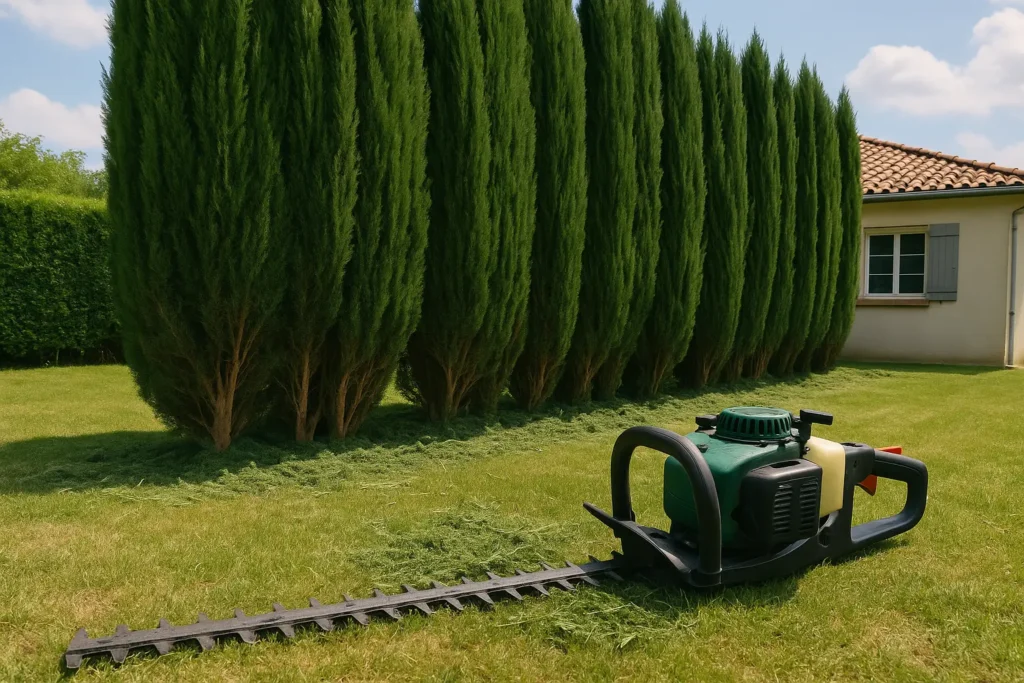
Managing pruning waste poses an additional challenge. Branches, impregnated with resin, decompose very slowly and are unsuitable for home composting. Their considerable volume often requires multiple trips to the recycling center, adding a logistical burden to regular maintenance.
The persistent humidity generated by the cypress trees
An unfavorable microclimate around your home
The dense, evergreen foliage of cypress trees effectively blocks natural air circulation, creating a particularly humid microclimate around your home. This constant humidity gradually transforms your outdoor environment by promoting the development of moss and mold on all surrounding surfaces.
The practical consequences of this excessive humidity are numerous. Terraces, driveways, and low walls quickly become covered in a carpet of moss, making surfaces slippery and potentially dangerous. Nearby facades turn green prematurely, requiring more frequent cleaning and renovation work.
- Accelerated deterioration of furniture garden and outdoor equipment
- Environment favorable to the development of fungal diseases
- Permanent feeling of humidity which can penetrate into the House
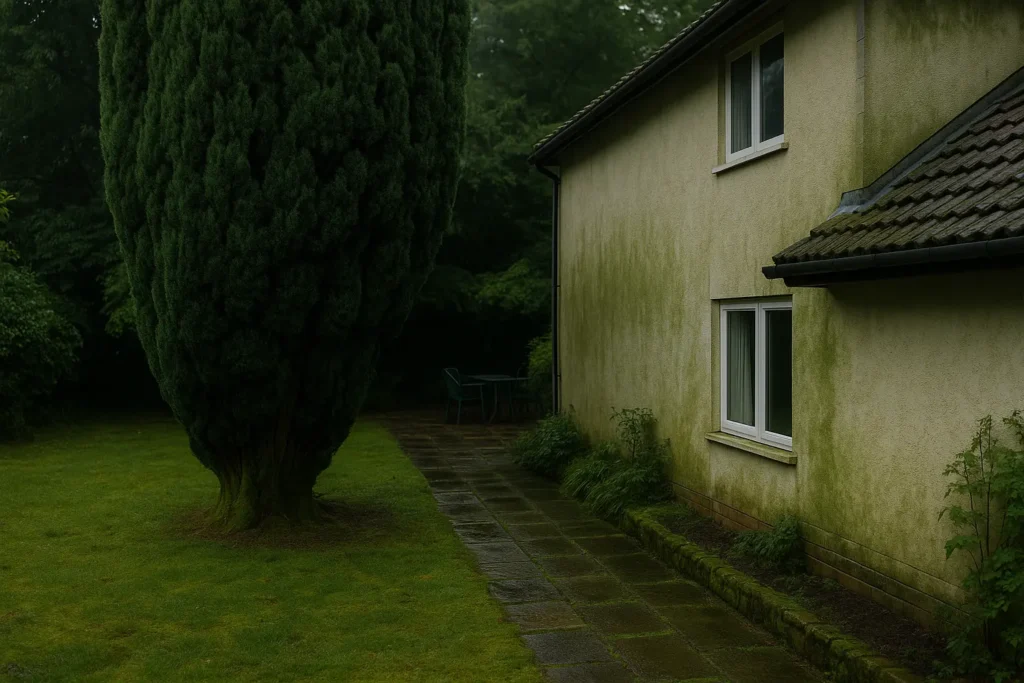
This constantly humid atmosphere gradually transforms your outdoor space into an uncomfortable zone, a far cry from the warm Mediterranean ambiance often associated with these slender conifers. Ironically, these iconic trees of the Mediterranean basin ultimately create an environment that feels more like a rainforest than a garden sunny and welcoming.
Cypress, a formidable fuel in case of fire
Among the most prized Mediterranean species, the cypress of Provence (Or Italian cypress, Cupressus sempervirens) is often planted in alignment to structure gardens. However, behind its architectural appearance lies an often overlooked danger: its extreme flammability.
Rich in resin and with dense foliage, this conifer acts as a real fire accelerator. In the event of a heatwave or prolonged drought, the lower branches and dead leaves on the ground become highly combustible. In the immediate vicinity of a house, a simple fire can quickly transform an elegant line of cypress trees into real line of incendiary propagation.
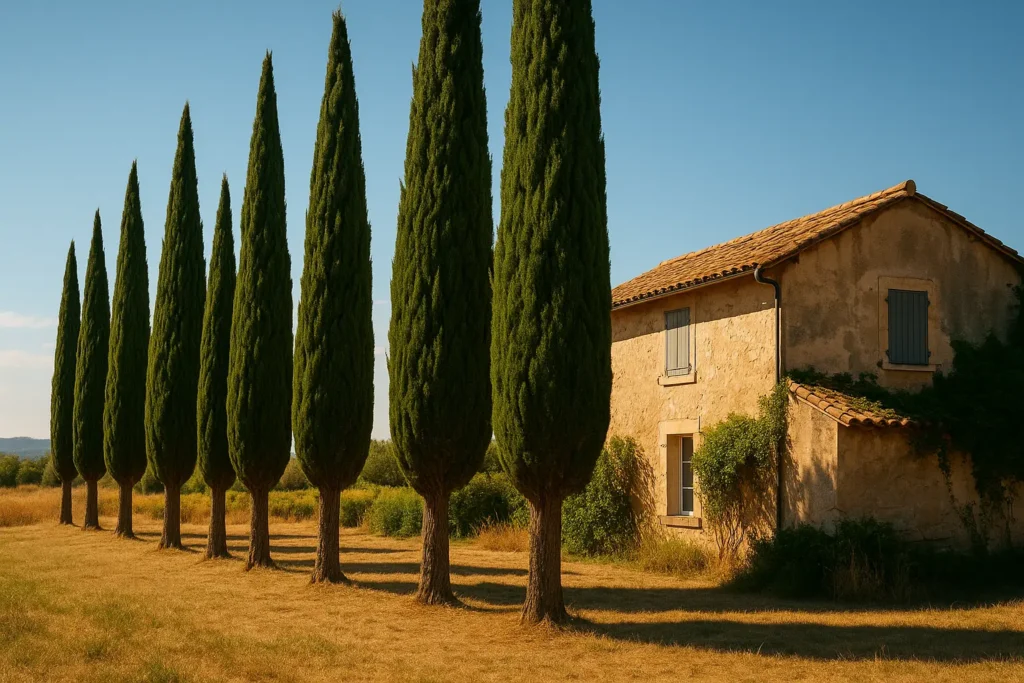
In areas susceptible to fire risk (Mediterranean areas, wooded edges, dry land), it is strongly recommended to maintain a safe distance, prune low branches, and limit dry vegetation at the base of trees. This is essential maintenance, but often underestimated at the time of planting.
Diseases and parasites: a tree not as robust as it seems
Although resistant to drought, the Italian cypresses And cypress of Provence do not escape a notable biological fragility. At the top of the threats, the cypress canker (Seiridium cardinale) attacks the branches and causes the tree to gradually dry out, recognizable by its resinous streaks and brownish areas. This fungal disease particularly affects trees subject to water stress or poorly pruned.
Parasites are not left out: mealybugs, black aphids, red spiders…so many intruders invisible to the naked eye, but devastating in the medium term. Their presence leads to a progressive weakening of the foliage, a loss of aesthetics and an increasing need for phytosanitary treatments, often incompatible with ecological garden management.

So, choose a cypress of Provence for its slender shape and its plant sobriety requires taking into account long-term phytosanitary risks and the potential cost of regular health monitoring, or even premature slaughter.
The cypress, with its majestic shape and Mediterranean silhouette, may seem like an ideal ally for structuring a garden and preserving privacy. But planting a cypress near your home also means accepting its share of constraints, sometimes difficult to manage on a daily basis. Invasive roots, demanding maintenance, health risks, and even high flammability: it's better to be aware of these drawbacks before planting, rather than having to endure them afterward. Before letting yourself be seduced by its elegance, ask yourself the right question: Are your land, your climate and your lifestyle really compatible with this emblematic tree?
